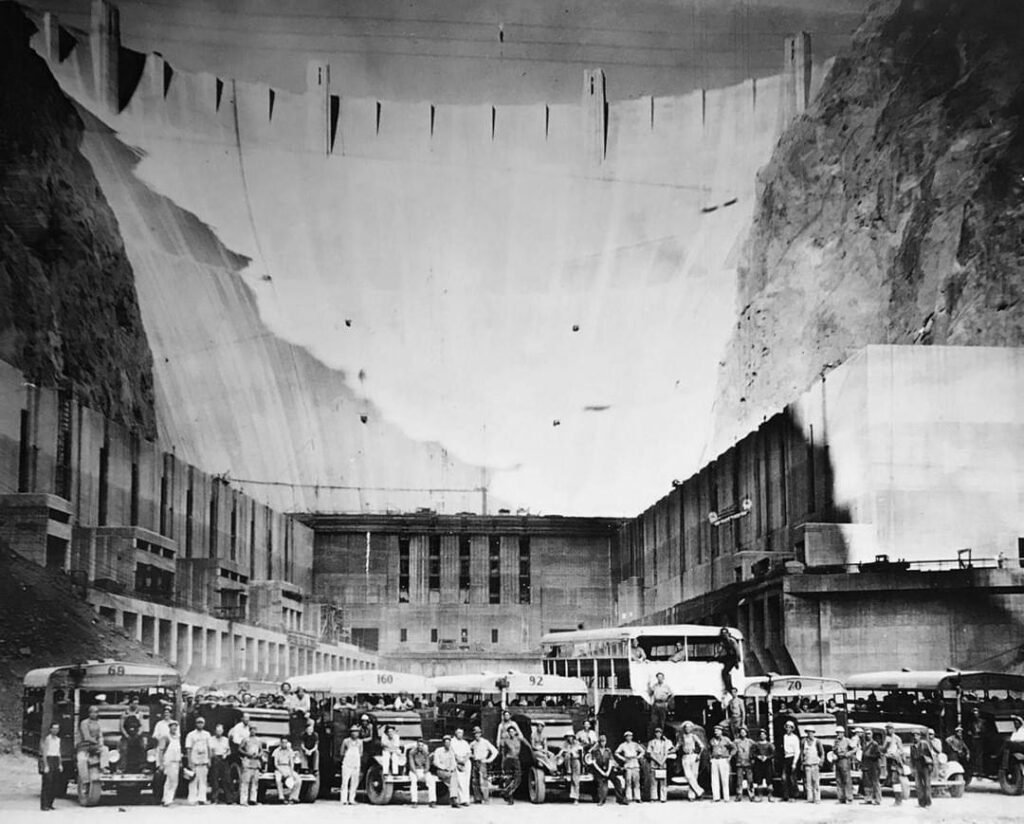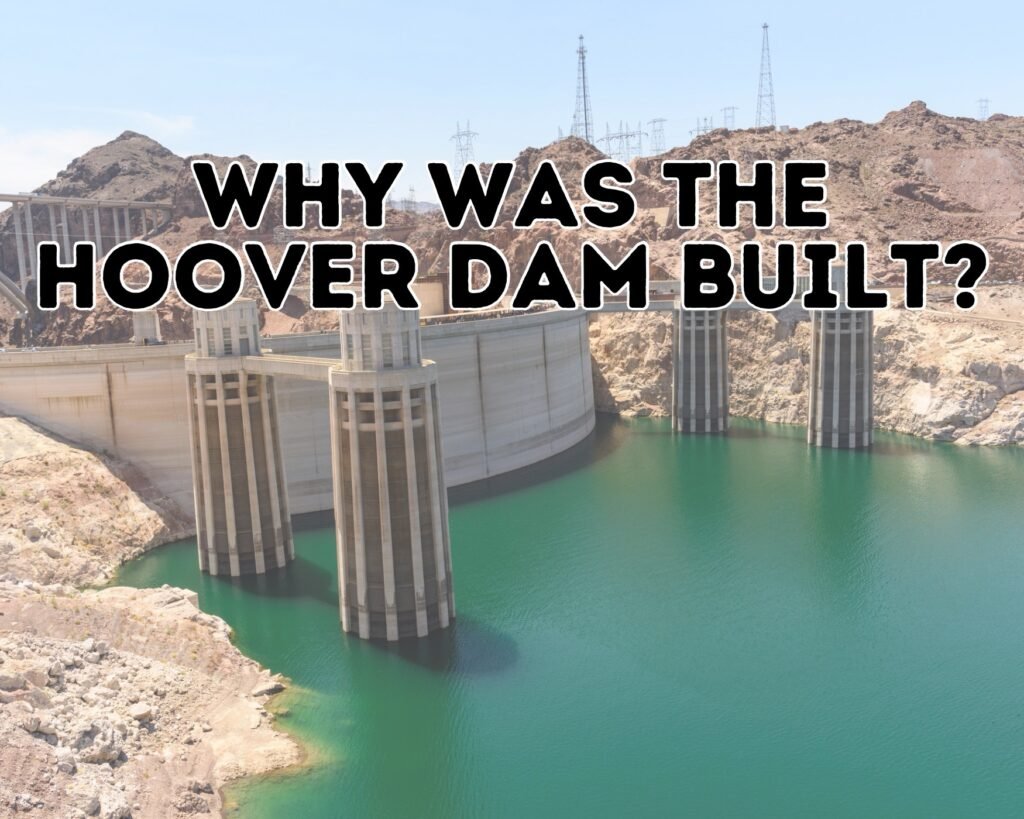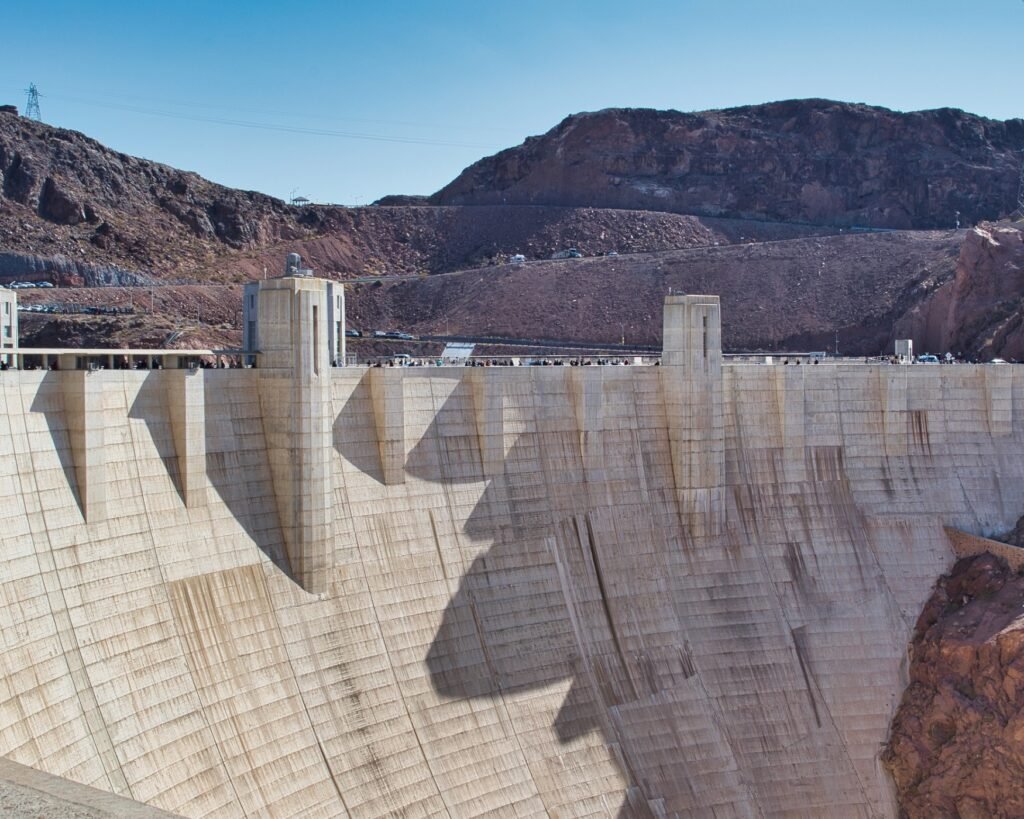In the early 1930s, amidst the hardships of the Great Depression, a monumental project was taking shape in the American Southwest. The Hoover Dam, a symbol of human ingenuity and resilience, was nearing its completion. This colossal structure was not just a marvel of engineering; it was a beacon of hope and progress during one of the nation’s toughest times. As March 1, 1936, approached, anticipation was building. This was not just any day; it was the eve of a historic moment when the mighty Colorado River would be released, marking the completion of one of the most significant achievements in civil engineering.

The Hoover Dam project was initiated for crucial reasons: to control the frequent flooding of the Colorado River, to provide a reliable water supply for irrigation, and to generate electricity to power the growing needs of the region. As the project neared its completion, the country watched in awe. The day before the release of the river was filled with a palpable excitement and a sense of accomplishment. Workers, engineers, and onlookers alike were about to witness the culmination of years of tireless effort and groundbreaking work.
In this article, we’ll explore the vision behind the Hoover Dam, the herculean task of its construction, the atmosphere and activities on the day before the Colorado River’s release, the dam’s innovative design and technology, and the lasting impact it has had on the American landscape. Join us as we journey back to this pivotal moment in history, a testament to human determination and a defining chapter in America’s story of progress and innovation.

Why Was the Hoover Dam Built?
In the late 1920s, the American Southwest faced a critical challenge. The Colorado River, wild and unpredictable, frequently flooded communities and farmlands. Additionally, the region was in desperate need of a reliable water source for irrigation and a means to generate electricity for its rapidly growing cities. The Hoover Dam project was envisioned as a solution to these pressing issues. It aimed to tame the Colorado River’s floods, provide a steady water supply for agricultural use, and harness the river’s power to generate hydroelectric energy.
How Did the Construction of the Hoover Dam Unfold?
The construction of the Hoover Dam was an extraordinary feat of engineering and labor. Beginning in 1931, thousands of workers and hundreds of engineers came together in the midst of a harsh and remote desert landscape. They faced daunting challenges: extreme heat, difficult terrain, and the need to divert the mighty Colorado River.
The initial task was to divert the river through four large tunnels drilled into the canyon walls. This process alone took two years, allowing workers to begin the construction of the dam itself. An innovative concrete pouring technique was used, creating individual blocks that would form the dam’s curved structure. This method was crucial in managing the concrete’s heat and preventing cracking. Workers toiled in shifts around the clock, pouring, setting, and curing the massive concrete blocks under the harsh desert sun and the glow of floodlights at night.
What Were the Conditions Like on the Last Day Before the River’s Release?
March 1, 1936, was a day charged with anticipation. Workers and officials gathered, knowing they were part of a historic event. The atmosphere was a blend of excitement and a collective sense of pride in what they had achieved against all odds. Many reflected on the journey – the challenges overcome, the technological innovations achieved, and the sheer scale of human effort that had gone into the dam’s construction. It was a moment of reflection and celebration before the Colorado River would be unleashed the following day.

What Made the Design and Technology of the Hoover Dam So Innovative?
The design and construction of the Hoover Dam were groundbreaking at the time and remain impressive to this day. The dam’s arch-gravity structure, a blend of arch and gravity dam designs, was revolutionary. This design allowed the weight of the water in the reservoir, Lake Mead, to be transformed into a compressive force against the canyon walls, adding to the dam’s stability and strength.
Key Technological Innovations:
- Concrete Pouring Technique: The construction utilized a then-novel method of pouring concrete in blocks (or “lifts”) and cooling it with chilled water pipes. This prevented cracking from the heat generated during the curing process.
- Powerplant Turbines: The dam’s powerplant was equipped with massive turbines capable of generating over 2,000 megawatts of electricity. This was a significant advancement in hydroelectric power technology at the time.
- Spillways and Outlets: The dam’s design included huge spillways and outlets to control flooding and regulate water flow, ensuring the dam could withstand the area’s natural elements.
How Did the Hoover Dam’s Design Impact its Functionality?
The Hoover Dam’s design was not just about aesthetics; it was fundamentally tied to its functionality. The curved structure allowed it to withstand immense water pressure, while the height and breadth of the dam maximized its water storage and hydroelectric power generation capacity.
The dam transformed the Colorado River from a wild, unpredictable force into a manageable and reliable resource. It controlled regular flooding, ensuring safety and stability for downstream communities. Furthermore, by storing water in Lake Mead, the dam provided a consistent water supply, crucial for the agricultural development of the region.
What Were the Challenges in Managing the Colorado River’s Power?
Harnessing the power of the Colorado River was a major challenge. The river’s flow varied dramatically between seasons, and the dam had to be designed to cope with these fluctuations. The construction of spillways was crucial to manage excess water during flood seasons, while the turbine design allowed for efficient energy generation even when water levels were lower.

What Has Been the Lasting Impact of the Hoover Dam?
The Hoover Dam, since its completion, has had a profound and lasting impact on the American Southwest and beyond. It became a cornerstone for water management and power supply in the region, fundamentally changing the landscape both literally and figuratively.
Economic and Environmental Impact:
- Agricultural Development: The reliable water supply from Lake Mead transformed arid lands into fertile agricultural fields, boosting the region’s economy.
- Urban Growth: The electricity generated by the dam powered the growth of cities like Las Vegas and Los Angeles, contributing to their development into major urban centers.
- Environmental Considerations: While the dam provided numerous benefits, it also had environmental impacts, including changes in river ecology and habitats. These consequences have led to ongoing discussions about sustainable water and power management.
How Has the Hoover Dam Been Perceived Over Time?
Initially celebrated as a symbol of human achievement and American ingenuity, the Hoover Dam also became a tourist attraction, drawing millions of visitors. Over time, its perception has evolved, reflecting changing attitudes towards large-scale infrastructure projects and environmental stewardship. It remains, however, a testament to the era’s engineering capabilities and a symbol of the potential and challenges of harnessing natural resources.
Reflecting on the Hoover Dam’s Place in History
As we look back on that monumental day in 1936 when the Colorado River was first released through the Hoover Dam, we reflect on more than just an engineering feat. We see a pivotal moment in American history — a convergence of ambition, innovation, and determination in the face of daunting challenges. The Hoover Dam stands not just as a structure of concrete and steel, but as a lasting legacy of the power of human will and the complexities inherent in our relationship with the natural world.
If you love to travel, check out GoDiscoverPlaces.com
From the bustling cities that light up the desert night to the green fields that feed nations, the ripple effects of the Hoover Dam’s construction continue to be felt. It reminds us of our capabilities and responsibilities as stewards of the earth’s resources, inspiring future generations to build with vision, care, and respect for the environment.
As an Amazon Associate we earn from qualifying purchases through some links in our articles.




